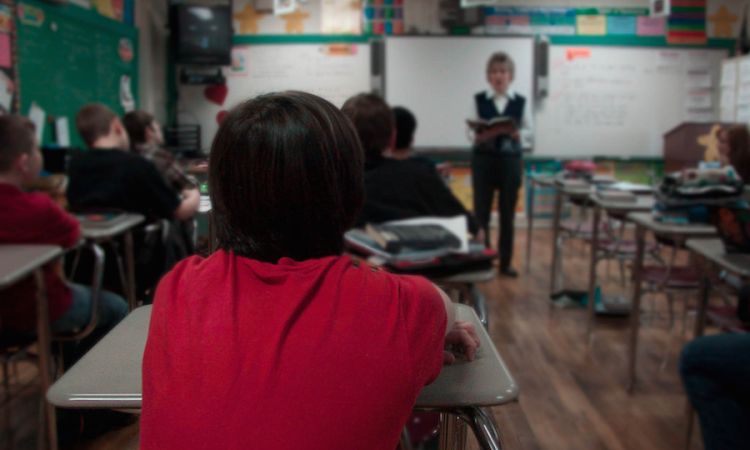The Student and the Educator
Fourth, St. Thomas Aquinas puts it concisely: Education is a lifelong process of self-activity, self-direction, and self-realization. The child is the center of attention, the "principal agent," in the educational process.
The instructor is the "essential mover" who teaches by the witness of his or her example and consistently brings to their lessons a high degree of preparedness. The teacher's role is critical to Catholic education (Ibid). The students' real life situations initiate the process of learning. Educators lead their students out beyond their life setting-their Sitz-im-Leben. Experience teaches students to discover for themselves by engaging the five senses. This includes, for example, making or doing beautiful art forms or listening to beautiful music. Affectivity must be channeled in socially-accepted ways. For the most part, "Rap" culture exalts anti-social affectivity.
In his apostolic exhortation, "Evangelii nuntiandi," Pope Paul VI reflected: "Today students do not listen seriously to teachers but to witnesses, and if they do listen to teachers, it is because they are witnesses."
More in The Way of Beauty
Catholic educators teaching in public schools can adapt Catholic principles to the public school curriculum especially when these are also embraced by other faith-traditions.
The Benedict Effect
At his papal election in 2003, why did Joseph Cardinal Ratzinger take the papal name Benedict? It was the Benedictine monks, who, systematically and comprehensively, rebuilt Europe after the barbaric invasions of Rome in the 5th century. Some European leaders refuse to acknowledge Europe's Christian roots and, specifically, the Church's role in building on Greco-Roman culture, Christianizing it, and handing it on to future generations. At a time when Europe was cast in darkness, the Church led it out of the darkness; the Church was Europe's light. Not opinion, but fact.
St. Benedict, the Benedictine Order, and the Monastic Centuries
In the middle of the sixth century, a small movement changed the landscape of the European world. Benedict of Nursia (480-547) introduced a new way of life and thinking that has brought vitality to contemporary men and women. He laid the foundation of Benedictine monastic life with his monks first at Subiaco and Rome, and then at Monte Cassino.
Benedict composed his Rule of disciplined balance that fostered order and peace. If "pray and work" (ora et labora) was the Benedictine motto, the way to live it was through beauty, piety, and learning. Every monastery was built on an expansive tract of land, and eventually, it became a miniature civic center for the townspeople. One could say that the monks sacralized the landscape.
Monastic Schools
(Column continues below)
Subscribe to our daily newsletter
Of the many contributions the Benedictine monks made to European culture, education remained a prominent value. In the Middle Ages, education was conducted within the confines of the monastery by monks, and later, by nuns. They offered religious and general education to youth who intended to enter the monastic or clerical life and to youth who were preparing for public life. They lived at home. Young children of six or seven years of age were taught the basics. The majority, especially potential monks and nuns, were taught to read Latin, writing, chant, arithmetic, and learning how to read time on the sundial. The main text was the Psalter. From the eighth century onward, students were taught the seven liberal arts, the trivium, grammar, logic, and rhetoric, and the quadrivium, arithmetic, astronomy, geometry, and music. The ideal monastery of the Benedictine Order was that of Saint Gall in present-day Switzerland where the town flourished around the monastery.
In our century, Catholic education continues to flourish across the world in developed and in developing countries.
Conclusion: Catholic Education in the United States
The Encyclopedia of Catholicism asserts that "throughout history, there is likely no more compelling instance of Catholic commitment to education than the school system created by the U.S. Catholic community. The story of American Catholicism goes back to the very first Catholic settlers in the New World."
Despite the various declarations of freedom in early American history, anti-Catholicism prevailed through groups such as the Know-Nothing Society of the 1850s. They existed to eradicate Popery, Jesuitism, and Catholicism.
Between 1840 and 1900, at least sixty European religious orders of women and men were teaching in this country's parochial schools.


